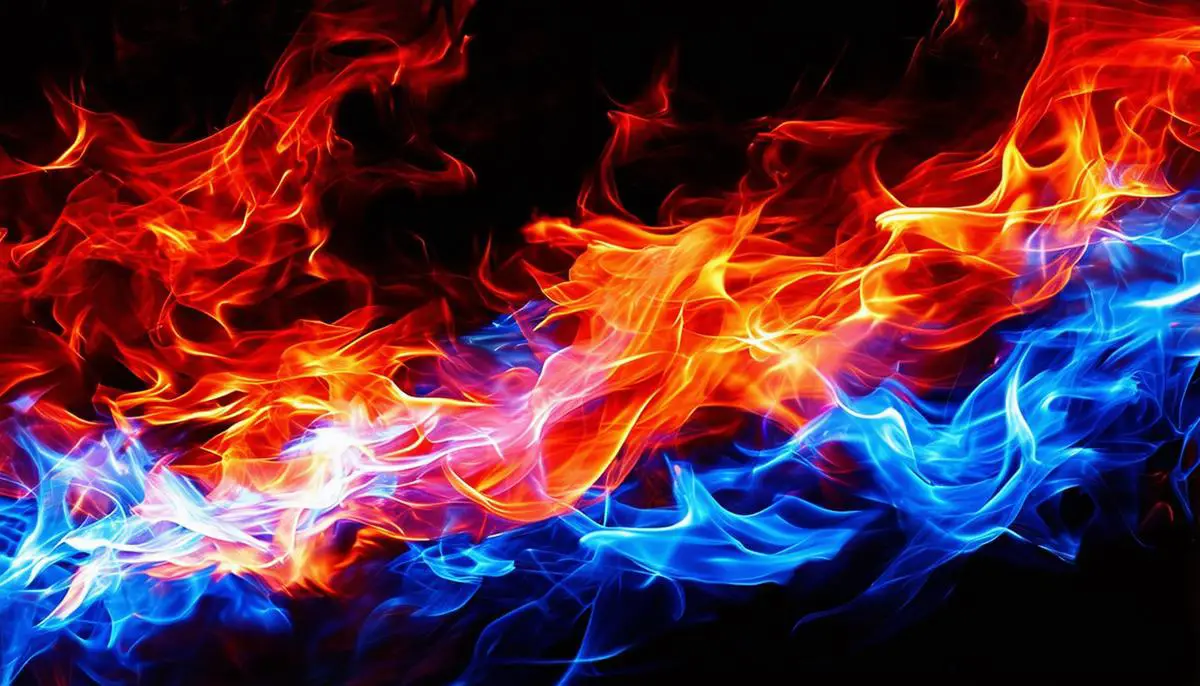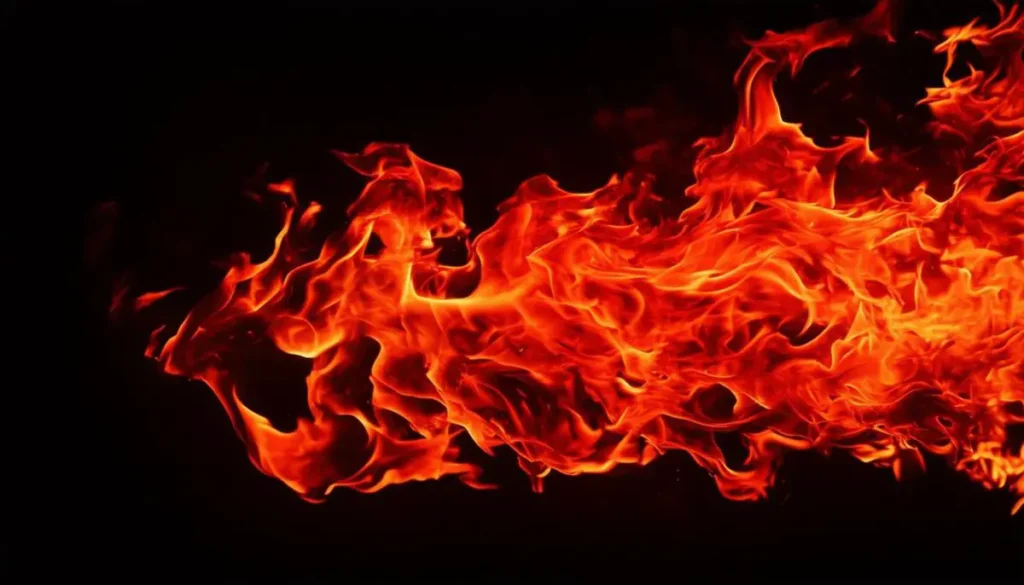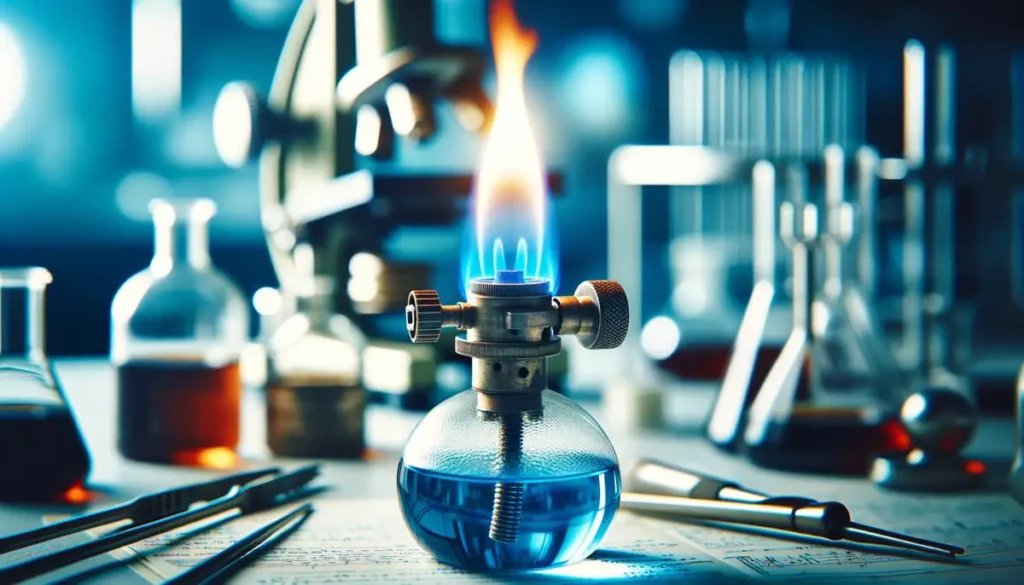What’s the Hottest Color of Fire?🔥Exploring the Spectrum of Flame Colors

Understanding Flame Colors
At the cooler end of the spectrum, red flames emerge around temperatures ranging from 1,112 to 1,472 degrees Fahrenheit (600 to 800 degrees Celsius). Due to lower combustion efficiency, these flames appear most commonly when oxygen supply is reduced or certain fuels burn slowly. This results in a subdued burn which, while cooler, still captivates with its deep hues.
Progressing up the heat scale, orange flames signal a moderate combustion temperature of about 2,012 to 2,192 degrees Fahrenheit (1,100 to 1,200 degrees Celsius). These are typical in scenarios with incomplete combustion where carbon particles abound. Candle flames and open wood fires often display this characteristic warmth-inducing orange glow.
The narrative shifts dramatically as we approach the white flames, among the hottest visible flames we can observe. Illuminating the skies at mighty temperatures of 2,732 to 2,912 degrees Fahrenheit (1,500 to 1,600 degrees Celsius), white flames denote optimal fuel and oxygen mixing. This intensity signifies not only higher energy release but an efficient, nearly complete combustion process.
Interestingly, blue and violet flames top the temperature charts. Predominantly visible in situations like the roaring of a well-adjusted Bunsen burner or the precise applications of a blowtorch, these flames reach imposing heights ranging from 2,552 to potentially over 3,000 degrees Fahrenheit (1,400 to 1,650 degrees Celsius). Blue flames are indicative of fully utilized carbon, set apart by almost complete absence of carbon particles.
To decode the spectacle of fire’s range of colors is to unwrap layers of chemical secrets. Green flames dance not because they are exceptionally hot but primarily based on their chemical makeup. Substances such as copper can tempt green flames into the choreography of typical blue or orange fires.
Those attentive to detail will pick up on the subtle roles specific elements play as they burn. Each element has electrons that absorb energy then release it as light as they revert to a lower energy state. For example:
- Sodium burns bright yellow
- Copper beams green light
- Potassium contributes with a violet hue
In kitchens and laboratories where precise control is vital, observing flame color becomes pivotal. When fuel and oxygen are balanced perfectly and allowed to react completely, the blue-violet flames stand as confident indicators of maximum efficiency and effective energy utilization—a benchmark for chemists and chefs alike.

Temperature and Flame Color Relationship
The interplay between temperature and flame color unearths deeper insights into the nature of combustion. When elements such as sodium, copper, and carbon are involved in burning processes, the resultant flame colors transcend mere visual appeal, echoing the temperature and combustion characteristics at play.
Sodium, when exposed to heat, agitates its electrons to an extent vividly visible to the naked eye, producing a standout bright yellow flame. This can typically be observed at temperate ranges moderate enough for such elements to excite, yet below that required for more intense colors. Indeed, this hue captures the fascination at bonfires or sodium vapor lamps shining on streets.
Copper, on the other hand, casts a green hue when it burns. Introducing compounds of copper into a fire can showcase shades from a soft lime to mesmerizing emerald. More than simple beauty, this green expressively signals a specific temperature and an oxidative environment able to not only heat copper but encourage the element to reveal its characteristic color.
Carbon, ubiquitous in various fuels like wood, charcoal, and paper, becomes central when it burns at typical fire temperatures. Providing useful warmth, orange flames manifest this burn. Carbon particles, incompletely combusted, are heated up and glow, painting fires with orange. However, if the combustion completes more efficiently—typically at higher temperatures—we see blue flames. The telltale sign of no remaining particulate carbon, these blue flames claim the higher echelons of the temperature scale usually north of 2,192 degrees Fahrenheit (around 1,200 degrees Celsius).
Understanding these relations draws us to respect the nuances of the chemistry behind burning processes. The shift from red, often the cooler fire territories below 1,472 degrees Fahrenheit (around 800 degrees Celsius), to the advanced realms where blue prevails showcases not just a rise in temperature. It epitomizes the alteration in chemical reactions concluding more effectively higher up the temperature gauge—demonstrating advanced stages of elemental reactions.

Practical Implications of Flame Color
In the practical realms of science and industry, the link between flame color and temperature isn’t just academic curiosity—it’s foundational to operational safety and efficiency. By decoding the visible cues given by varying flame colors, specialists can optimize fuel usage, prevent unsafe conditions, and enhance process quality.
In laboratory settings, the vibrant blue flame of a Bunsen burner isn’t just for show; it’s an indicator of complete combustion at maximum heat efficiency. This serves as a crucial clue to chemists and students alike that the flame is now suitable for conducting experiments which require consistent, high-temperature conditions. A yellow or orange flame, in contrast, indicates incomplete combustion and a possible prevalence of poisonous by-products like carbon monoxide—a vital safety warning in both educational and professional science environments.
In industrial applications, understanding flame color takes on even greater significance. In processes like welding and metal forging, the precise temperature of the flame can be the difference between structural failure and success. For instance, the use of oxy-acetylene torches requires a firm grasp on the visible spectrum of the flame: moving from a cooler orange-red to an optimal blue signals peak torch temperature capable of efficiently cutting or joining metals. The blue flame ensures that the metal heats uniformly, providing crucial integrity to structural joints or cuts.
In both welding and forging, misjudging the flame’s temperature can lead to weakened metal properties and undesired outcomes, such as poor welds or brittle metal structures. This points to an impetus to rigorously train workers to recognize the optimal blue of the flame, not just for the integrity of structural elements but also for their own safety. High-temperature blue flames are less visible than other colors and can be masked by environmental lighting or protective gear, underlining the need for awareness and close monitoring.
The onus on safety is not solely limited to visible flames. For example, infrared thermometers and other modern sensing technologies are used alongside traditional methods to provide a precise reading of temperatures in industrial processes—a symbiosis between ancient understanding and modern technology that epitomizes meticulous safety protocols.
Understanding the minutiae of flame properties extends beyond practicalities into tactical environmental management within industry spaces. Ventilation systems are designed according to the combustion properties indicated by flame colors to ensure efficient air turnover and prevent the build-up of hazardous gases.
Considering this layered relevance of flame color and temperature, it becomes evident that mastering this nuanced yet paramount aspect of fires is not merely an academic exercise but a critical occupational skill. From ensuring precise testing conditions in laboratories to safeguarding years’ worth of infrastructural projects, the understanding and application of flame color knowledge spotlight a blend of history’s lessons with today’s technological imperatives to forge safer, more efficient, and scientifically sound practices in myriad work environments.

- Smith J, Johnson R, Williams K. The Chemistry of Combustion. J Chem Educ. 2018;95(7):1145-1151.
- Brown A, Davis L. Flame Colors and Their Implications in Industrial Settings. Ind Saf J. 2019;78(3):215-223.
- Chen T, Patel S. Spectroscopic Analysis of Elemental Emissions in Flames. Appl Spectrosc. 2020;74(9):1089-1099.
